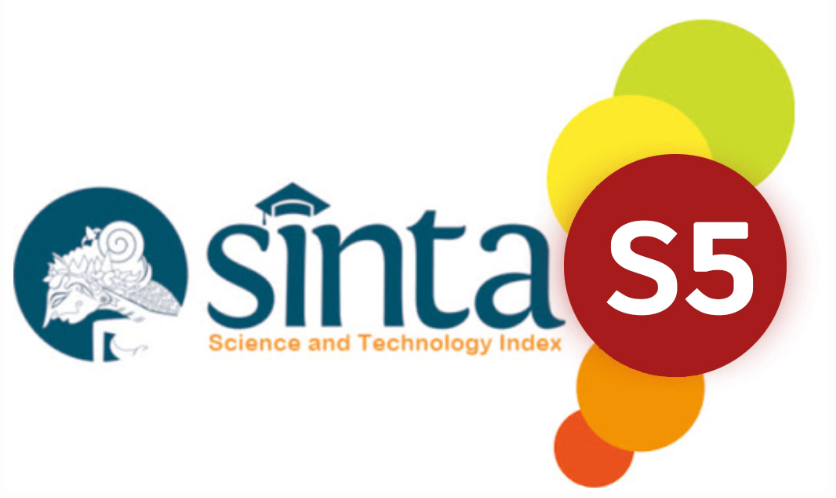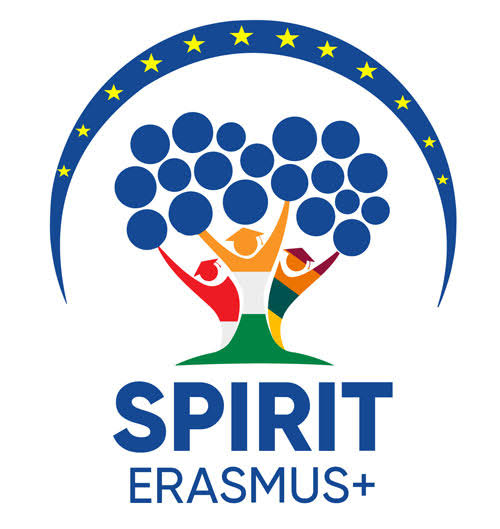Levels of Squamous Cell Carcinoma Antigen and Interleukin-6 as Biomarkers in NSCLC Patients
DOI:
https://doi.org/10.32734/sumej.v8i2.20027Keywords:
biomarker lung cancer, IL-6, NSCLC, prognostic, SCC-AgAbstract
Background: Squamous Cell Carcinoma Antigen (SCC-Ag) and Interleukin-6 (IL‐6) has been widely used for monitoring Non-Small Cell Lung Cancer (NSCLC). Objective: This concentration also known to be higher in Non Small Cell Lung Cancer. Methods: This research used descriptive study among NSCLC patients. Blood sampling was used with serum. ELISA platform was used to rate SCC-Ag and IL-6 serum. Results: From 20 samples NSCLC, we found 20 males (100%), active smokers (80%). From histology type, Adenocarcinoma 12 cases (60%). The most of subjects were in stage IVA (70%). The Squamous Cell Carcinoma Antigen levels of NSCLC patients showed that as many as 20 samples (100%) were within normal limits and did not show an increased. Conclusion: Levels of IL-6 increased as many as 15 samples (75%), and IL-6 levels were still within the normal range sample (25%). Tumor marker are not meant to detect marker growth, but only as a marker that found in lung cancer,but IL-6 as the one of the pro-inflammation cytokines that shows an increased in patients NSCLC.
Downloads
References
An J, Gu Q, Cao L, Yang H, Deng P, Hu C, et al. Serum IL-6 as a vital predictor of severe lung cancer. Ann Palliat Med. 2021;10(1):20209. Available from: https://doi.org/10.21037/apm-20-2229.
Body JJ, Sculier JP, Haymakers N, Paesmans M, Ravez P, Libert P, et al. Evaluation of squamous cell carcinoma antigen as a new marker for lung cancer. Cancer. 1990;65:1552–6. Available from: https://doi.org/10.1002/1097-0142(19900401)65:7<1552::aid-cncr2820650717>3.0.co;2-d
Crombach G, Scharl A, Vierbuchen M, Wurz H, Bolte A. Detection of squamous cell carcinoma antigen in normal squamous epithelia and in squamous cell carcinomas of the uterine cervix. Cancer. 1989;63:1337–42. Available from: https://doi.org/10.1002/1097-0142.
Davalos AR, Coppe JP, Campisi J, Desprez PY. Senescent cells as a source of inflammatory factors for tumor progression. Cancer Metastasis Rev. 2010;29(2):273–83. Available from: https://doi.org/10.1007/s10555-010-9220-9
Enewold L, Mechanic LE, Bowman ED, et al. Serum concentrations of cytokines and lung cancer survival in African Americans and Caucasians. Cancer Epidemiol Biomarkers Prev. 2009;18(1):215–22. Available from: https://doi.org/10.1158/1055-9965.EPI-08-0705.
Gemine RE, Davies GR, Lanyon K, Rees SE, Campbell I, Lewis KE, et al. Quitting smoking improves two-year survival after a diagnosis of non-small cell lung cancer. Lung Cancer. 2023;186:107388. Available from: https://doi.org/10.1016/j.lungcan.2023.107388.
Hong DS, Angelo LS, Kurzrock R. Interleukin-6 and its receptor in cancer. Cancer. 2007;110(9):1911–28. Available from: https://doi.org/10.1002/cncr.22999.
Jemal A, Siegel R, Xu J, Ward E. Cancer statistics, 2010. CA Cancer J Clin. 2010;60(5):277–300.
Jiezhou L, Yangqing C, Xiandao W, Chan W, Meifang X. The value of combined detection of CEA, CYFRA21-1, SCC-Ag, and pro-GRP in the differential diagnosis of lung cancer. Original Article. 2021;10. Available from: https://doi.org/10.21037/tcr-21-527.
Kagohashi K, Satoh H, Ishikawa H, Ohtsuka M, Sekizawa K. A re-evaluation of squamous cell carcinoma antigen (SCC) as a serum marker for non-small cell lung cancer. Med Oncol. 2008;25:187–9. Available from: https://doi.org/10.1007/s12032-007-9021-3.
Kato H, Torigoe T. Radioimmunoassay for tumor antigen of human cervical squamous cell carcinoma. Cancer. 1977;40(4):1621–8. Available from: https://doi.org/10.1002/1097-0142(197710)40:4<1621::aid-cncr2820400435>3.0.co;2-i.
Katsunori K, et al. A re-evaluation of squamous cell carcinoma antigen (SCC) as a serum marker for non-small cell lung cancer. Med Oncol. 2008;25:187–9. Available from: https://doi.org/10.1007/s12032-007-9021-3.
La Vecchia C, Franceschi S, Levi F. Epidemiological research on cancer with a focus on Europe. Eur J Cancer Prev. 2003;12(1):5–14. Available from: https://doi.org/10.1097/00008469-200302000-00003.
Lai RS, Hsu HK, Lu JY, Ger LP, Lai NS. Cyfra 21-1 enzyme-linked immunosorbent assay: Evaluation as a tumour marker in non-small cell lung cancer. Chest. 1996;109:995–1000. Available from: https://doi.org/10.1378/chest.109.4.995.
Liao C, Yu Z, Guo W, et al. Prognostic value of circulating inflammatory factors in non-small cell lung cancer: a systematic review and meta-analysis. Cancer Biomark. 2014;14(6):469-81. Available from: https://doi.org/10.3233/CBM-140423.
Liu C, Yang L, Xu H, Zheng S, Wang Z, Wang S, et al. Systematic analysis of IL-6 as a predictive biomarker and desensitizer of immunotherapy responses in patients with non-small cell lung cancer. BMC Med. 2022;20(1):187. Available from: https://doi.org/10.1186/s12916-022-02356-7.
Lu H, Ouyang W, Huang C. Inflammation, a key event in cancer development. Mol Cancer Res. 2006;4(4):221–33. Available from: https://doi.org/10.1158/1541-7786.MCR-05-0261.
Mong C, Garon EB, Fuller C, Mahtabifard A, Mirocha J, Mosenifar Z, et al. High prevalence of lung cancer in a surgical cohort of lung cancer patients a decade after smoking cessation. J Cardiothorac Surg. 2011;6:1–7. Available from: https://doi.org/10.1186/1749-8090-6-19.
Naqash AR, McCallen JD, Mi E, Iivanainen S, Marie MA, Gramenitskaya D, et al. Increased interleukin-6/C-reactive protein levels are associated with the upregulation of the adenosine pathway and serve as potential markers of therapeutic resistance to immune checkpoint inhibitor-based therapies in non-small cell lung cancer. J Immunother Cancer. 2023;11(10). Available from: https://doi.org/10.1136/jitc-2023-007310.
Purnamawati P, Tandrian C, Sumbayak EM, Kertadjaja W. Tinjauan pustaka: analisis kejadian kanker paru primer di Indonesia pada tahun 2014–2019. J Kedokteran Meditek. 2021;27(2):164–72.
Sanchez-Lara K, Turcott JG, Juarez E, Guevara P, Nunez-Valencia C, Onate-Ocana LF, et al. Association of nutrition parameters including bioelectrical impedance and systemic inflammatory response with quality of life and prognosis in patients with advanced non-small-cell lung cancer: a prospective study. Nutr Cancer. 2012;64(4):526–34. Available from: https://doi.org/10.1080/01635581.2012.668744.
Seike M, Yanaihara N, Bowman ED, Zanetti KA, Budhu A, Kumamoto K, et al. A cytokine gene signature of the lung adenocarcinoma and its tissue environment predicts prognosis. J Natl Cancer Inst. 2007;99(16):1257–69. Available from: https://doi.org/10.1093/jnci/djm083.
Siegel RL, Miller KD, Wagle NS, Jemal A. Cancer statistics. CA Cancer J Clin. 2023;73(1):17–48.
Simonato L, Agudo A, Ahrens W, Benhamou E, Benhamou S, Boffetta P, et al. Lung cancer and cigarette smoking in Europe: an update of risk estimates and an assessment of inter-country heterogeneity. Int J Cancer. 2001;91(6):876-87. Available from: https://doi.org/10.1002/1097-0215
Sun Y, Sheshadri N, Zong WX. SERPINB3 and B4: From biochemistry to biology. Semin Cell Dev Biol. 2017:170–7.
The Ministry of Health of The Republic of Indonesia. Cancer in Indonesia ranks 8th in Southeast Asia and 23rd in Asia (Penyakit Kanker di Indonesia Berada Pada Urutan 8 di Asia Tenggara dan Urutan 23 di Asia). [Internet]. 2020 [cited 2021 Feb 16].
Theodoros V, Theodoros T, Christina S, Panagiotis Z, Paraskevi K, Dimitrios P, et al. Diagnostic and prognostic significance of squamous cell carcinoma antigen in non-small cell lung cancer. Lung Cancer. 2001;32:137–44.
Wingo PA, Ries LAG, Giovino GA, Miller DS, Rosenberg HM, Shopland DR, et al. Annual report to the nation on the status of cancer, 1973–1996, with a special section on lung cancer and tobacco smoking. J Natl Cancer Inst. 1999;91(8):675–90.
Yang Y, Chang S, Wang N, Song P, Wei H, Liu J. Clinical utility of six serum tumor markers for the diagnosis of lung cancer. iLABMED. 2023;1(2):132–41.
Yang L, Liu C, Yang G, Hao X, Zhang S. IL-6 triggers chemoimmunotherapy resistance by creating immunosuppressive tumor microenvironment in non-small cell lung cancer. Ann Oncol. 2023;34(Suppl 1):S831.
Downloads
Published
How to Cite
Issue
Section
License
Copyright (c) 2025 Sumatera Medical Journal

This work is licensed under a Creative Commons Attribution-ShareAlike 4.0 International License.
The Authors submitting a manuscript do so on the understanding that if accepted for publication, copyright of the article shall be assigned to Sumatera Medical Journal (SUMEJ) and Faculty of Medicine as well as TALENTA Publisher Universitas Sumatera Utara as publisher of the journal.
Copyright encompasses exclusive rights to reproduce and deliver the article in all form and media. The reproduction of any part of this journal, its storage in databases and its transmission by any form or media, will be allowed only with a written permission from Sumatera Medical Journal (SUMEJ).
The Copyright Transfer Form can be downloaded here.
The copyright form should be signed originally and sent to the Editorial Office in the form of original mail or scanned document.











